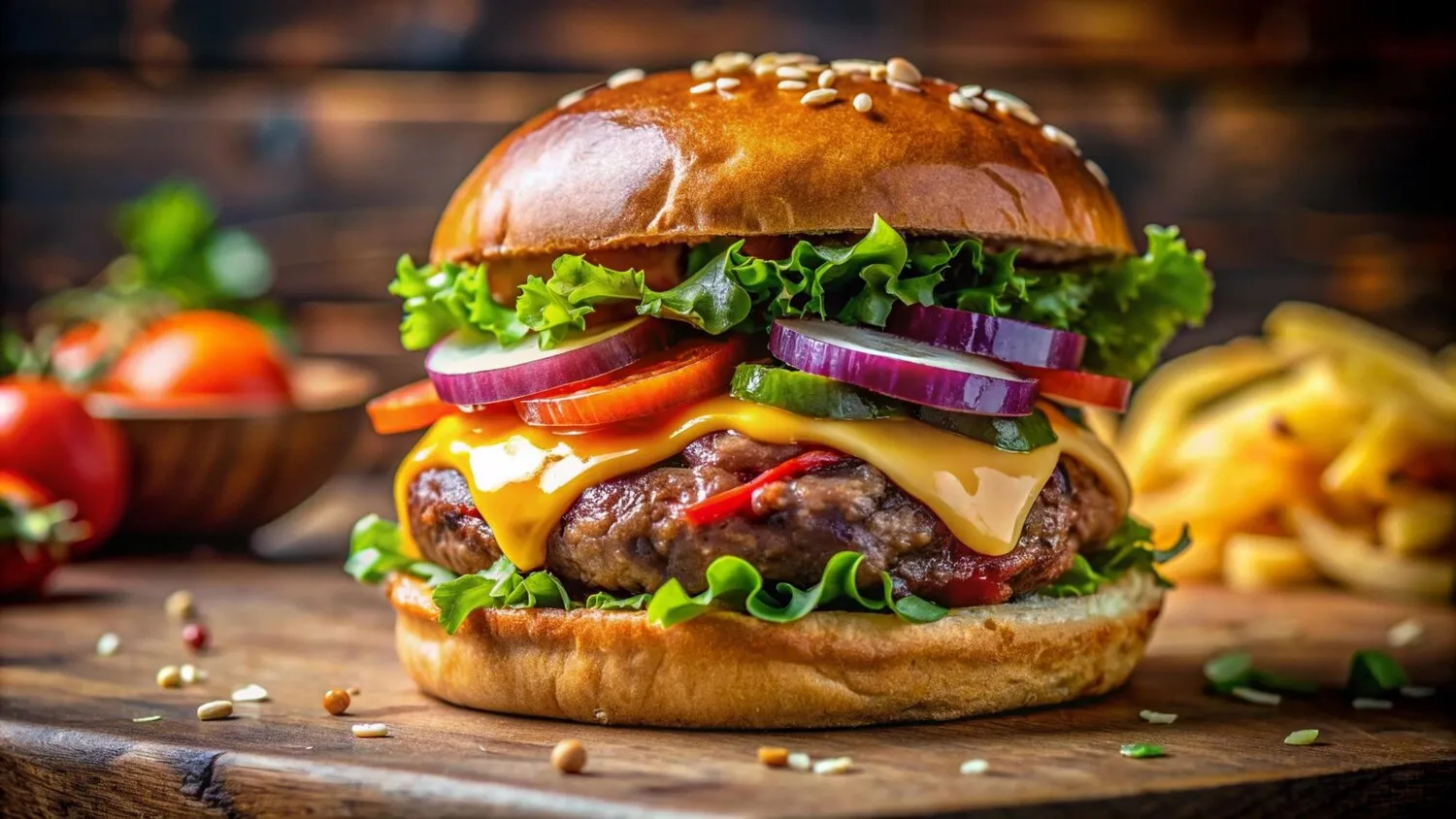
Burger
They also serve Burgers.
Nutrition Facts
* The % Daily Value (DV) tells you how much a nutrient in a serving of food contributes to a daily diet. 2,000 calories a day is used for general nutrition advice.
The burger's origins are debated, but it's widely believed to have evolved from the Hamburg steak brought by German immigrants in the 19th century. These steaks were initially served without buns. The concept of placing the patty between two slices of bread gained popularity in the late 19th and early 20th centuries, leading to the modern burger as we know it.
Burgers are deeply ingrained in American food culture, representing convenience, casual dining, and a customizable culinary experience. They are a staple at fast food restaurants, diners, and backyard barbecues.
Fast Food Icon
Burgers are synonymous with fast food, representing a readily available and affordable meal option.
Barbecue Staple
Burgers are a common sight at barbecues and outdoor gatherings, signifying casual and social dining.
Regional Variations
Different regions have developed unique burger styles, such as the Oklahoma Onion Burger or the Juicy Lucy from Minneapolis, reflecting local culinary preferences.
Burgers offer a balance of savory, fatty, and umami flavors, often complemented by tangy, sweet, and spicy elements from condiments and toppings.
The primary flavor comes from the ground beef patty, which is typically seasoned with salt and pepper. The fat content of the beef contributes to the juicy texture and richness. Toppings such as cheese add a creamy, salty, and sometimes sharp flavor. Condiments like ketchup and mustard provide sweetness and tang, while pickles offer acidity and crunch. Onions can contribute sweetness, pungency, or both depending on preparation (raw, caramelized, etc.). Bacon adds smoky and salty notes. Overall, the flavor profile is highly customizable based on ingredient selection.
Beef Selection
Choose ground beef with a good fat content (around 80/20 blend) for a juicy and flavorful patty. Avoid overly lean ground beef, which can result in a dry burger.
Patty Shaping
Gently form the patties, avoiding over-packing the meat. Make a slight indentation in the center of each patty to prevent them from bulging during cooking.
Cooking Temperature
Cook burgers over medium-high heat for a good sear. Use a meat thermometer to ensure the burgers reach the desired internal temperature for doneness (medium-rare: 130-135°F, medium: 135-145°F, medium-well: 145-155°F, well-done: 155°F+).
Toasting the Bun
Toasting the burger bun lightly can improve its texture and prevent it from becoming soggy from the burger juices.
Explore additional Burgers dishes and restaurants
Explore BurgersDiscover top dining spots and culinary experiences in Bregenz.
Explore BregenzLearn more about the food culture, restaurant scene, and culinary heritage of Austria.
Explore Austria